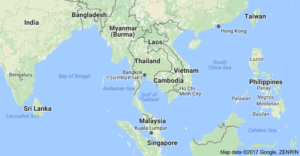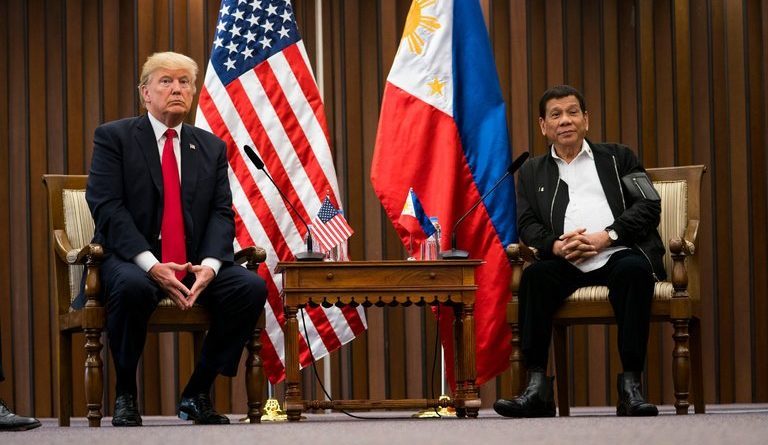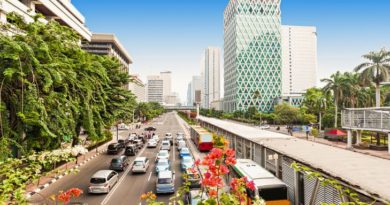ASEAN: S.E.A. VIEW – Asean should step up to promote a pacific Indo-Pacific By Marty Natalegawa For The Straits Times
.
If there is one thing that resembles a consistent theme or approach emanating from the recently concluded visit to Asia by United States President Donald Trump, it’s perhaps his administration’s preference for the term “Indo-Pacific”, over the more familiar “Asia-Pacific”, favoured by previous US administrations.
In its wake, some observers have suggested that the Trump administration’s adoption of the term “Indo-Pacific” represents a new approach to manage, indeed contain, China’s rise. Underlying this view is the linkage to the so-called “Quad” – namely the possibility of deeper security ties between the United States, Australia, India and Japan.
What will this mean for Asean and its place in the region’s security architecture? Will Asean be marginalised as a result as some have suggested?
The term “Indo-Pacific” has particular resonance for me, and it is my view that Asean should not fear the revival of this concept. It is not incompatible with Asean but Asean should build on it in the interests of regional peace and security as well as its continued relevance in Asia’s security architecture.
Indeed, in May 2013, while serving as Indonesia’s Foreign Minister, I had made a pitch for an Indo-Pacific approach by Asean while speaking at the Center for Strategic and International Studies (CSIS) in Washington; in particular, I made a case for the idea of having an expanded version of Asean’s Treaty of Amity and Cooperation (TAC), with its commitment to the non-use of force in the settlement of disputes.
A decade earlier, while serving as Indonesia’s Director-General for Asean Cooperation, a recognition of the indivisibility of peace and prosperity for the Indian Ocean-rimmed and the Pacific Ocean-rimmed countries motivated me to push for an East Asia Summit (EAS) membership that extended beyond what was then the club of the 10-member Asean grouping and the “Plus Three” (China, Japan and the Republic of Korea) to also include India, Australia and New Zealand.
It is my view that the expansion of the EAS, one reflecting an Indo-Pacific outlook, would provide Asean with the greatest opportunity of maintaining its centrality both geographically and, more significantly, geopolitically in the region’s evolving security architecture.
It also represents a natural progression for Asean, ever reaching outwards, to East Asia, the Asia-Pacific and the Indo-Pacific region.
The expansion could also help its efforts to build a stable and benign geopolitical space in its immediate neighbourhood.
But crucially, of course, what is needed for that to happen is an outlook that emphasises the principles of common security and the indivisibility of peace as opposed to a focus on forging destabilising Cold War-type policies of alliances and the containment of a rising power. In the past, I have used the term “dynamic equilibrium” to describe such a perspective.
As the Trump administration puts in place and promotes its Indo-Pacific concept, there is sadly a dearth of Asean consideration of the issue. This is particularly the case given that Asean and the East Asia Summit outcomes in 2013-2014 had formally recognised the significance of the idea of an Indo-Pacific Treaty of Friendship and Cooperation.
Such a treaty is essentially a TAC for the Indo-Pacific region – a deliberate and purposeful attempt to infuse the Indo-Pacific region with positive “win-win” dynamics, much like Asean’s positive transformative impact on the hitherto conflict-ridden South-east Asian region
Today, the United States has chosen to adopt an Indo-Pacific perspective. In the absence of an alternative Asean geopolitical vision – whatever it may be – we may yet see the injection of power-politics or Cold War-type dynamics in the Indo-Pacific region, with their possible attendant negative impacts on Asean.
Ours today is a world of tectonic geopolitical and geo-economic shifts fraught with challenges: of potential and actual conflicts; of acute trust deficits among nations; and not least, of the management of complex change.
Yet, it is also one full of opportunities: to positively alter the dynamics among nations; to proactively seize the opportunities present in the constant state of flux in setting new norms in inter-state relations; to “wage peace”, leveraging on the interest all states have in their common security.
Just recently, I had the opportunity to engage in discussions with colleagues from various parts of the world in Astana, Kazakhstan, on the subject of “Eurasia”; it was an opportunity to essentially explore the possibilities of collaboration between the continents of Europe and Asia.
Significantly, there was notable interest among participants from the Central Asian region of the Asean experience. They wanted to find out more about how the countries of South-east Asia, within their common Asean home, have managed to forge a central role in the region’s architecture-building despite the pressures from without.
Personally, it provided a reminder that Asean has mattered. It has not only survived the Cold War years and the uncertainties of the immediate post-Cold War period, it has also actually thrived ever since.
However, there is no room for geopolitical complacency.
In a fast changing world, a business-as-usual outlook is certain guarantee for irrelevance.
Today, as it marks its 50th year, Asean is challenged to continue its transformative outlook in the wider region – the Indo-Pacific. It is not too late.
• The writer, Indonesia’s foreign minister from 2009-2014, is a member of the United Nations Secretary-General’s High-Level Advisory Board of Mediation.
>


<>
NOTE : All photographs, news, editorials, opinions, information, data, others have been taken from the Internet ..aseanews.net | [email protected] |
For comments, Email to :
Aseanews.Net | [email protected] | Contributor









